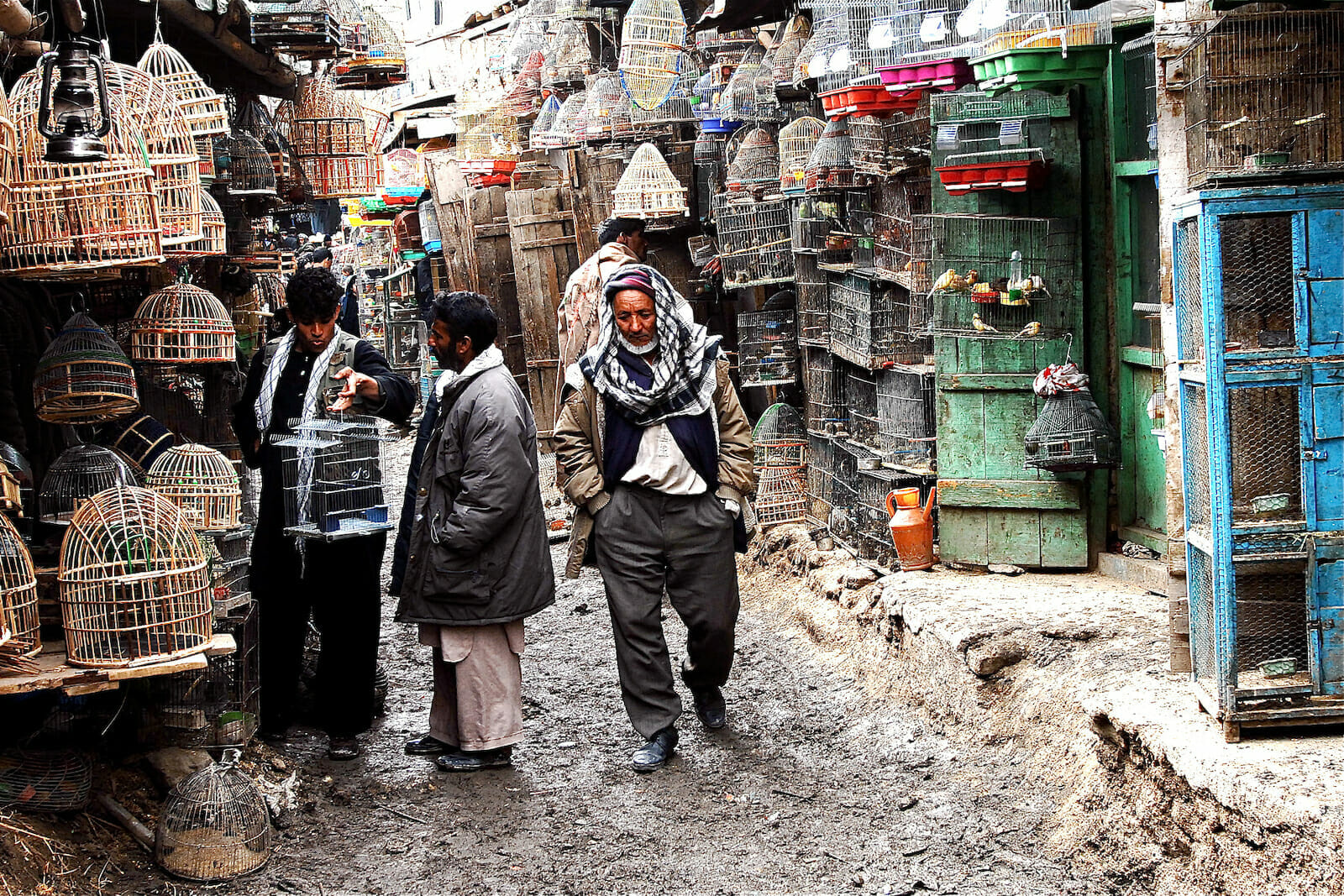
A Battle for the Ethos of Afghanistan
Between May 28th and May 30th, a delegation of Afghan political leaders from the opposition met with the leadership of the Taliban in Moscow. Afghan politicians ranging from former President Hamid Karzai to the former Governor of the Balkh Province Atta Noor engaged in multiple rounds of formal and informal discussions with Taliban leaders including the group’s second in command, Abdul Ghani Baradar and Sher Mohammad Abbas Stanikzai, its chief negotiator. The series of talks were opened with remarks by both the Russian Foreign Minister Sergey Lavrov and the president’s envoy to Afghanistan Zamir Kabulov. While no members of the current government in Kabul were present for the discussions because the Taliban has refused to recognize the government’s legitimacy, all Afghans who partook did so under the oversight of the country’s High Peace Council. Yet, at the opening of the discussions, both Karim Khalili the Chairman of the High Peace Council and the Ambassador of Afghanistan to the Russian Federation were present.
The discussions did result in some progress, as was noted in depth by the former Afghan Minister of Finance Omar Zakhilwal, who was present. Specifically, he noted the discussions “allowed both sides to share grievances, concerns, and views about the past present and future.” Yet, the discussions ended in a deadlock, which was not unexpected given the inelastic positions of the two sides on key policy matters ranging from the constitution to the potential structure of the military. This deadlock was largely based on disagreements surrounding a proposed withdrawal of all non-Afghan military personnel from Afghanistan which referred American and NATO troops.
This is the result of the fact that the Taliban largely views such forces as “occupying” forces supporting a “puppet government” in Kabul. Many in the Afghan government see them as a security guarantee preventing the country from being overrun by militant groups. Similarly, negotiations between the United States and the Taliban which have been ongoing for nearly a year have reached a similar impasse over the same disagreement. In short, the Taliban are insisting that a timeline be agreed to regarding the withdrawal of international forces from the country prior to the signing of any agreement to end the devastating war in Afghanistan. This is not to say that certain groups within Afghan society do not support the eventual removal of all foreign troops from Afghanistan, as all support it as an eventual end-goal. However, significant portions of Afghan society strongly believe such a withdrawal cannot happen until a peace agreement with the Taliban is fully implemented.
At the surface level, agreeing to a timetable regarding the withdrawal of foreign military forces from Afghanistan could easily serve as a confidence-building measure aimed at demonstrating genuine constructive intentions from both sides in the negotiations. This would bode especially well if the Taliban were to similarly agree to a ceasefire in which they would cease targeting the Afghan government in deadly attacks and mining the streets of cities and rural areas across Afghanistan with improved explosive devices. In fact, similar strategies have been adopted around the globe to varying degrees in efforts ranging from the armistice agreement that halted the Korean War in the 1950s to the Oslo Accords between Israel and Palestinian leadership at the end of the twentieth century. While previous agreements on troop withdrawals prior to and during the implementation of peace agreements and armistices have seen cases of both success and failure throughout history, it is unlikely to be successful in Afghanistan. This is due to the actuality that the conflict between the Taliban and the internationally recognized government of Afghanistan is not over the secession of a portion of the territory as in Palestine and Kosovo, but a battle over the ethos of Afghanistan.
Despite the fact that the leadership of the Taliban appears eager to engage in peace talks with both the government of Afghanistan and the international community, it is imperative that the Taliban’s historical record is not forgotten. Specifically, the fact that at the beginning of the twenty-first century when the Taliban controlled nearly the entirety of Afghanistan, barbaric laws were imposed on the population under its rule. Women who broke the group’s strict law on their roles were publicly executed in soccer stadiums and no freedom of speech or assembly existed in the country. This is not mentioning the fact that the Taliban provided sanctuary to the deadly Al-Qaeda which allowed the group to carry out attacks in places ranging from the United States to Tanzania.
Further, in the territory that the Taliban controls across Afghanistan today, the strictest legal codes are imposed on the population and those who express disagreement with them are publicly executed. Additionally, women live under medieval-like restrictions and are rarely seen outside of their houses. It is also worthwhile to examine the actions of the Taliban in the territory controlled by the country’s internationally recognized government. For instance, in all of the presidential and parliamentary elections held in Afghanistan since democratic rule in the country was restored the Taliban have attacked polling stations. This was not due to disagreements with the way elections were conducted or out of fears that they would be rigged but in opposition to the very act of citizens being able to choose their own leaders. The Taliban also regularly threaten and attack non-governmental organizations and civil society leaders across Afghanistan. This is not to mention the attacks that the group has carried out against diplomatic missions and news outlets. These horrific acts are only a few that have characterized the Taliban over the past several decades.
These actions stand in stark contrast to the record of the Afghan government since the establishment of democratic rule at the beginning of the twenty-first century. Regarding elections, the country has carried out over five separate elections to select both presidents and members of parliament. It is significant to note that the elections have had issues of fraud, such as in the most recent parliamentary elections when the Independent Electoral Commission took nearly seven months to announce the final results, but have been ranked as both freer and fairer than many of Afghanistan’s neighbors. Further, all elections have turnout rates that dwarf those of elections in the United States and other established democracies, demonstrating the value that the Afghan populous places on a democratic culture. Further, the country is home to an array of civil society organizations, many of which are led by women, youth, and ethnic minorities that are regularly attacked by the Taliban. According to Freedom House, the media environment in Afghanistan is ranked as freer than in countries located in the western hemisphere including Mexico, Honduras, and Ecuador. Afghanistan is also ranked better than every country that it shares a land border with. This is despite constant threats and attacks waged against the media by the Taliban for their coverage.
In examining both the historic and current conduct of the Taliban in comparison with the Afghan government it is clear that this ongoing war between the two parties is about the very ethos of the two actors. The Taliban seek to rule the country under a barbaric, extremist interpretation of Islamic law. On the other hand, the Afghan government, which is internationally recognized and democratically elected seeks to consolidate democratic gains in the country. Further, it is imperative to note that this is not referring to the current Afghan government led by President Ashraf Ghani but is, in fact, referring to a broad range of societal actors including the political opposition and civil society that have worked to allow Afghanistan to experience such remarkable progress over the past two decades. To be blunt, one side has sought to hold Afghanistan back while another has sought to move it forward.
It is imperative to re-examine the ongoing peace talks between the Taliban and political figures from the Afghan opposition, which is the closet that talks have gotten to including representatives of the Afghan government. This is not to say that a peace agreement between the two sides is not possible and should not be worked towards. In fact, nearly every Afghan citizen from across the political spectrum longs for peace in the country as does the international community. Yet, it is important to examine changes to the ongoing rounds of negations and dialogue that would be more appropriate for this unique conflict. Modifications must be made to ensure that prior to any agreement on a withdrawal of foreign forces from Afghanistan the improvements that have been seen in the past decade are preserved.
This does not mean changing the format of the negotiations, but in fact, changing the composition of the teams negotiating. For instance, in the handful of direct talks that have occurred between Afghans and the Taliban the delegations on both sides were almost entirely comprised of men over the age of fifty. This flaw could be fatal, as women and youth are the ones who have the most to lose if any peace agreement was made that gave concessions to the Taliban in areas such as women’s rights and democracy. Further, Afghanistan is a country that is overwhelmingly comprised of youth under the age of forty and therefore their buy-in is critical to the success of any peace agreement. Further, the Taliban’s agreement to meet with negotiating teams comprised of women and younger individuals would demonstrate that they would be willing to do away with their hardline positions and accept the ethos of modern-day Afghanistan.
Further, all potential agreements that have been discussed thus far are based off models that would be extremely flawed in the context of Afghanistan. For instance, some have mentioned the Lebanon model that would see the Taliban being guaranteed seats in government and having the potential to control powerful ministries such as those of interior and defense. Others have mentioned the possibility of a government resembling that in Iran where radical clerics are the real power brokers with an elected government being nothing but a façade. The most disturbing but most commonly mentioned model would be Afghanistan being renamed an Islamic Emirate that would resemble Saudi Arabia, Qatar, or a plethora of other Gulf States. In short, all of these models would risk disposing of the gains made in Afghanistan over the past decade and allow the Taliban to win the war over the ethos of the country.
In the ongoing process for peace in Afghanistan, it is critical to remember that the war that has ravaged the country is in effect a war over the soul of the country. How this can be sufficiently addressed in a peace agreement will ultimately be up to the two parties and the Afghan people. Steps must be taken immediately to make sure to protect women and children, who would arguably be the most strongly impacted victims of widespread Taliban rule in the battle over the country’s ethos. This can be as simple as holding regular input sessions with peace negotiators or as complex as involving them directly in negotiations with the Taliban. In order for a peace agreement to be reached that is both socially and politically just, there is no other option.

